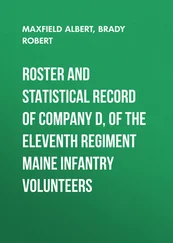Anthony Summers - The Eleventh Day
Здесь есть возможность читать онлайн «Anthony Summers - The Eleventh Day» весь текст электронной книги совершенно бесплатно (целиком полную версию без сокращений). В некоторых случаях можно слушать аудио, скачать через торрент в формате fb2 и присутствует краткое содержание. Жанр: Старинная литература, на английском языке. Описание произведения, (предисловие) а так же отзывы посетителей доступны на портале библиотеки ЛибКат.
- Название:The Eleventh Day
- Автор:
- Жанр:
- Год:неизвестен
- ISBN:нет данных
- Рейтинг книги:3 / 5. Голосов: 1
-
Избранное:Добавить в избранное
- Отзывы:
-
Ваша оценка:
- 60
- 1
- 2
- 3
- 4
- 5
The Eleventh Day: краткое содержание, описание и аннотация
Предлагаем к чтению аннотацию, описание, краткое содержание или предисловие (зависит от того, что написал сам автор книги «The Eleventh Day»). Если вы не нашли необходимую информацию о книге — напишите в комментариях, мы постараемся отыскать её.
The Eleventh Day — читать онлайн бесплатно полную книгу (весь текст) целиком
Ниже представлен текст книги, разбитый по страницам. Система сохранения места последней прочитанной страницы, позволяет с удобством читать онлайн бесплатно книгу «The Eleventh Day», без необходимости каждый раз заново искать на чём Вы остановились. Поставьте закладку, и сможете в любой момент перейти на страницу, на которой закончили чтение.
Интервал:
Закладка:
Practice runs aside, moreover, the airplanes had never been scrambled to confront an enemy. They were used to intercept civilian aircraft that strayed off course, suspected drug traffickers, planes that failed to file a proper flight plan. Hijackings were rare, and countermeasures were based on the concept of hijacking as it had almost always been carried out since the 1960s—the temporary seizure of an airliner, followed by a safe landing and the release of passengers and crew. FAA security had recently noted the possibility that suicidal terrorists might use a plane as a weapon—but only in passing, without putting new security measures in place.
The cumbersome protocol in place to deal with a hijacking involved circuitous reporting, up through the FAA and on to the Pentagon, all the way up to the office of the defense secretary. At the end of the process, if approval was granted, NORAD would launch fighters. The pilots’ mission would then be to identify and discreetly follow the airplane until it landed. Nothing in their training or experience foresaw a need to shoot down an airliner.
On September 11, faced with swift-moving, complex information about multiple hijackings, the FAA was overwhelmed. The internal communications mix—multiple Air Traffic Control Centers, Eastern Region Administration, a command center in Herndon, Virginia, an operations center and FAA headquarters in Washington—proved too muddled to be effective.
There was some confusion over operational language. At the FAA, a “primary target” denoted a radar return. At NORAD, it meant a search target. In FAA parlance, to speak of a plane’s “coast mode” was to project its direction based on its last known appearance on radar. On 9/11, one NEADS staff technician interpreted the word “coast” as meaning that one of the hijacked flights was following the coastline, the eastern seaboard. One senior FAA controller admitted having not even known, on September 11, what NORAD was.
NORAD, for its part, ran into problems when units not designated for defense were called in. Such units had different training, different regulations and equipment, used a different communications net. In one area, NORAD fighter pilots found themselves unable to communicate with airmen from other units. Of three relevant radio frequencies, none worked.
Transcripts of FAA and NEADS conversations, when finally obtained by the Commission, were found to feature exchanges like this:
NEADS
VOICE:
In that book … we used to have a book with numbers [Dial tone]
NEADS
IDENTIFICATION TECHNICIAN:
Wrong one [Beeps] I can’t get ahold of Cleveland. [Sigh] [Dial tone, dialing, busy signal]
… still busy. Boston’s the only one that passed this information. Washington [Center] doesn’t know shit …
FAA B
OSTON
C
ENTER:
… We have an F-15 holding … He’s in the air … he’s waiting to get directions …
NEADS
IDENTIFICATION TECHNICIAN:
Stand by—stand by one. Weapons? I need somebody up here that …
And so on. One NEADS technician would keep saying of Washington air traffic control, “Washington [Center] has no clue … no friggin’ … they didn’t know what the hell was going on … What the fuck is this about?” A staffer at the FAA’s Command Center, speaking on the tactical net, summed up the situation in four words: “It’s chaos out there.”
“The challenge in relating the history of one of the most chaotic days in our history,” a Commission analyst wrote at one point in an internal document, “is to avoid replicating that chaos in writing about it.” So copious is the material, so labyrinthine the twists and turns it reflects, that a lengthy treatise would barely do it justice. Miles Kara, a member of the team that analyzed the military’s failures—himself a former Army intelligence officer—was still producing learned essays on the subject as late as 2011. The Commission’s basic findings, however, were in essence straightforward, and—based on the incontrovertible evidence of the tapes and logs—revelatory.
THE NERVE CENTER for the military on September 11 was an unprepossessing aluminum bunker, the last functional building on an otherwise abandoned Air Force base in upstate New York. From the outside, only antennas betrayed its possible importance. Inside, technicians manned rows of antiquated computers and radar screens. They did not, though, expect to have a quiet day on September 11. Their commander, Colonel Robert Marr, moreover, expected to have to respond to a hijacking.
A simulated hijacking. For the Northeast Air Defense Sector’s headquarters was gearing up for its part in the latest phase of Vigilant Guardian, one of several large-scale annual exercises. This one, old-fashioned in that it tested military preparedness for an attack by Russian bombers, included a scenario in which an enemy would seize an airliner and fly it to an unnamed Caribbean island.
At 8:30 that morning, the exercise proper had not yet got under way. The colonel was munching apple fritters. His mission control commander, Major Kevin Nasypany, was away from the ops floor—in his words, “on the shitter.” The general to whom they answered, Larry Arnold, was at NORAD’s regional command center in Florida.
On the ops floor at NEADS, Master Sergeant Maureen Dooley, Technical Sergeant Shelley Watson, and Senior Airman Stacia Rountree were chatting about furniture at the mall—wondering whether an ottoman and a love seat were on sale. To be sure, the orders for the day’s training exercise provided for the team to be capable of responding to a “Real World Unknown,” but no one expected much to happen.
Then the unknown arrived, in the form of a call from FAA controller Joe Cooper, at Boston Center, to Sergeant Jeremy Powell. It was 8:38.
C
OOPER:
Hi, Boston Center TMU [Traffic Management Unit]. We have a problem here. We have a hijacked aircraft headed towards New York, and we need you guys to, we need someone to scramble some F-16s or something up there, help us out.
S
GT
. J
EREMY
P
OWELL:
Is this real-world or exercise?
C
OOPER:
No, this is not an exercise, not a test.
The sergeant, and the women who moments earlier had been discussing home furnishings, needed some persuading. Fazed by the advent of real-life excitement, Shelley Watson even exclaimed, “Cool!” A moment later, after an “Oh, shit,” she was all business. “We need call-sign, type aircraft. Have you got souls on board, and all that information? … a destination?” Boston Center could say only that the airplane seized was American 11—as would become clear, the first of the four hijacks. No one could have imagined the destination its hijackers had in mind.
By 8:41, Colonel Marr had ordered the two alert jets at Otis Air National Guard Base, on Cape Cod, to battle stations. At 8:46, having conferred with General Arnold, he ordered them into the air—to no avail. Absent any detailed data, they were assigned merely to fly to military-controlled airspace off the Long Island coast. In the same minute, 153 miles away, American 11 smashed into the North Tower of the World Trade Center.
The NEADS technicians, who had glanced up at a TV monitor, saw the tower in flames. “Oh, God,” one technician said quietly. “Oh, my God …” A colleague at her side cried, “God save New York.”
FAA controllers had meanwhile lost contact with the second hijacked plane, United 175. “It’s escalating big, big time,” New York Center manager Peter Mulligan told colleagues in Washington. “We need to get the military involved.” The military was involved, in the shape of the two NEADS fighters, but impotent.
The Air Force knew nothing of the second hijack until 9:03, the very minute that Flight 175 hit the South Tower. News of that strike reached the Otis pilots Lieutenant Colonel Timothy Duffy and Major Dan Nash while they were still holding off the coast of Long Island.
Читать дальшеИнтервал:
Закладка:
Похожие книги на «The Eleventh Day»
Представляем Вашему вниманию похожие книги на «The Eleventh Day» списком для выбора. Мы отобрали схожую по названию и смыслу литературу в надежде предоставить читателям больше вариантов отыскать новые, интересные, ещё непрочитанные произведения.
Обсуждение, отзывы о книге «The Eleventh Day» и просто собственные мнения читателей. Оставьте ваши комментарии, напишите, что Вы думаете о произведении, его смысле или главных героях. Укажите что конкретно понравилось, а что нет, и почему Вы так считаете.











